

In the sixth century, Chinese philosopher Lao Tzu recorded his Taoist teachings. It was Tzu who reminded us so profoundly that "The journey of a thousand miles begins with one step."
Everyone has taken first steps that have propelled us on countless journeys and the Calgary Mosquito Aircraft Society has been no different. In 2008 the first steps were taken to keep the
Mosquito and Hurricane in Calgary. That journey came to an end in December. Now it's time to start another, one that's been a half century in the planning. That's right, it's been 50
years since Lynn Garrison brought these planes to Calgary with the intent of displaying them in his museum.
On March 2nd and 3rd, the City of Calgary permitted the CMS into the warehouse to inventory the airplanes and to begin planning for their removal. Not ones to pass this opportunity by, the
Board of Directors took full advantage of the time to assemble a team of experts to perform a deeper inspection the parts. Unfortunately the City did impose a limit on the number of people
permitted into the warehouse so we weren't able to invite the membership at large. Wouldn't that have been great though?
Following the direction of our Restoration Lead, Jack McWilliams, the shipping boxes were emptied and their contents photographically inventoried by Peter Cromer. Hurricane parts were
separated into one area, Mosquito bits into another. Lancaster, T-33 and Cessna Crane parts were set aside, their fate yet to be determined. "There were surprises at some of our
discoveries," Jack says. "Like the box of flight instruments for CF-HMS." When the rear fuselage of the Mosquito was emptied among its contents were all four of the missing main landing
gear doors - still in excellent shape.
One of the most important items being documented was the condition of the wooden components - not just overall images, but close ups showing the condition, damage and deterioration. These
images will soon be forwarded off to our contacts for their comments and opinions for the wood's preservation and repair.
A team from the Bomber Command Museum of Canada spent Saturday looking inside the three Merlin engines, looking at the cylinders and rockers. Again, Jack reports, "the engines provided no
bad surprises and they managed to get some movement out of the crankshafts."
Unfortunately for all the positive things we saw, we also discovered a major obstacle to moving the Mosquito. The cradle the wing is currently sitting on is twisting and by no stretch of
the imagination, safe to carry the wing over more than 100 kilometres of city roads and highways to Nanton. Measurements were taken and plans are now afoot to design and construct a
sturdier shipping/storage cradle before our next visit.
Calling it "the biggest jigsaw puzzle I've personally encountered," Jack has already begun reflecting on the challenge the CMS faces as we begin our journey. There will be obstacles; some
we already know about and undoubtedly there will be others. Regardless, we've finally set off and it'll be a rewarding adventure.

There she sits - CF-HMS in all her glory. The two spreader bars bridging the bomb bay are braces that keep the fuselage from snapping in half. Installed in 1962 by employees of De Havilland Canada, they haven't been touched since. (Peter Cromer)
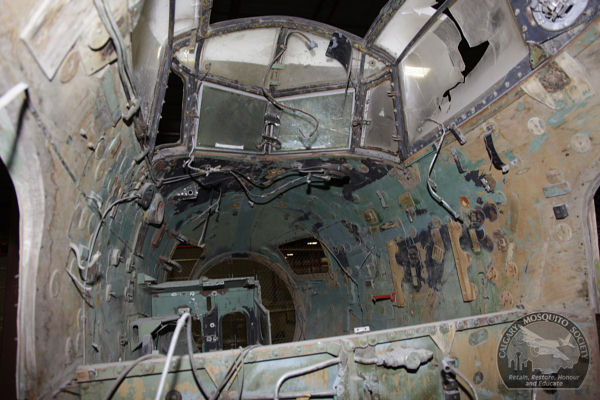
Currently just a hollow, dusty shell, many of the interior furnishings and equipment was discovered packed in boxes and spread throughout the warehouse. (Peter Cromer)

Most of the wooden components have suffered over the years. On the fuselage there are quite a few repairs that had been started but not completed. Several large areas have been stripped of their plywood skin, sometimes on both the inside and outside. This has made the fuselage structure very weak and will have to be addressed before the fuselage is removed from its shipping cradle. (Peter Cromer)
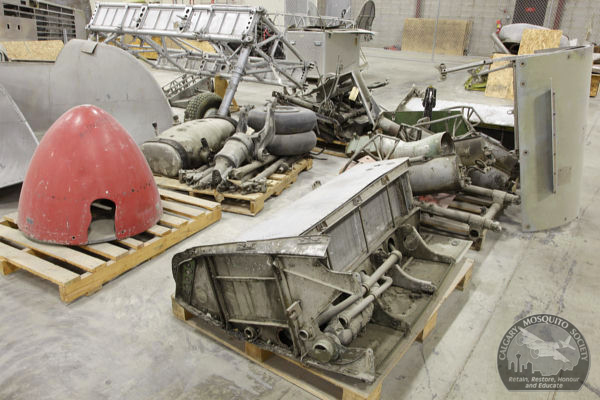
After hours of sorting, the jumbled piles of mix-matched airplane parts started to look like two distinct airplanes. In the foreground we see one of the large Mossie radiators, a spinner and main landing gear pieces. (Peter Cromer)
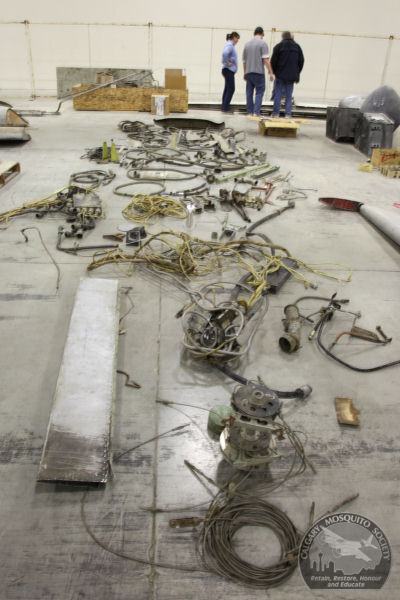
Some boxes contained all sorts of miscellaneous pieces; wires, cables and tubing. (Peter Cromer)
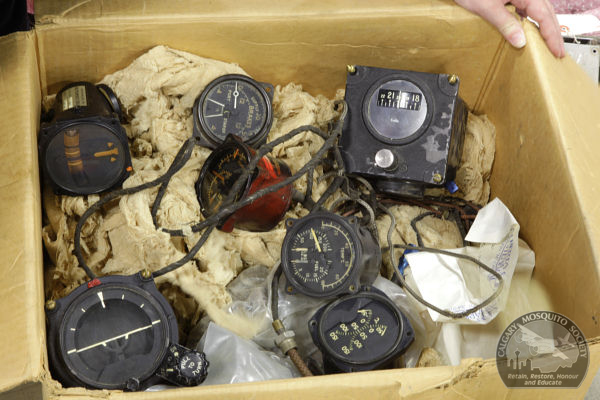
Other boxes yielded welcome treasure, like this box of Mosquito instruments. (Peter Cromer)

This mystery instrument is believed to have been part of the cameraman's station, possibly for drift correction. (Peter Cromer)
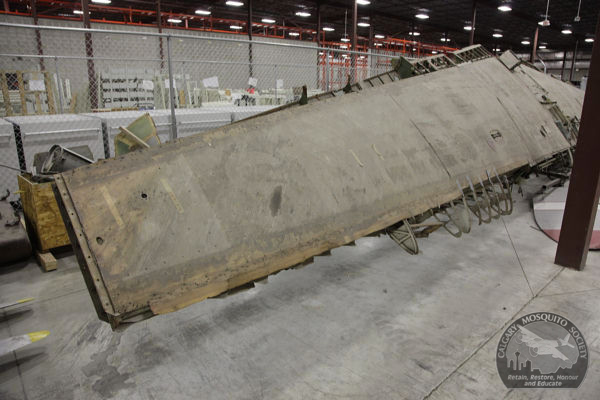
We've always known the wing was in rough shape, especially the exposed and weather-beaten upper surface. Notice how some of the remaining leading edge ribs are being held on with Duct tape. If you look closely however, you can still make out two vastly different sizes of registrations. (Peter Cromer)
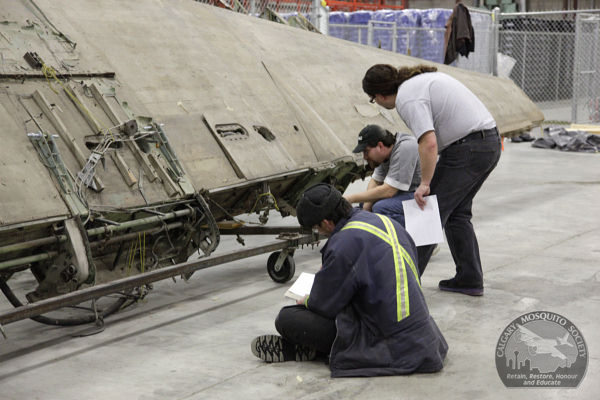
The makeshift shipping cradle the wing is resting on will not safely support the wing on its journey to Nanton, so a new one will be needed. Here we see the team taking a variety of measurements between the landing gear mounting points. (Peter Cromer)
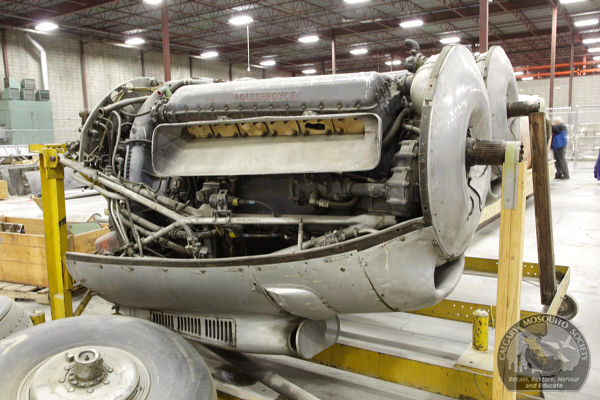
Bought separately from the airframe of CF-HMS, these two Merlin QEC (Quick Engine Change) units appear to have been 'pickled' with preservation oil. That's great news as it means the engines shouldn't be full of corrosion and can probably be brought to life once more. (Peter Cromer)
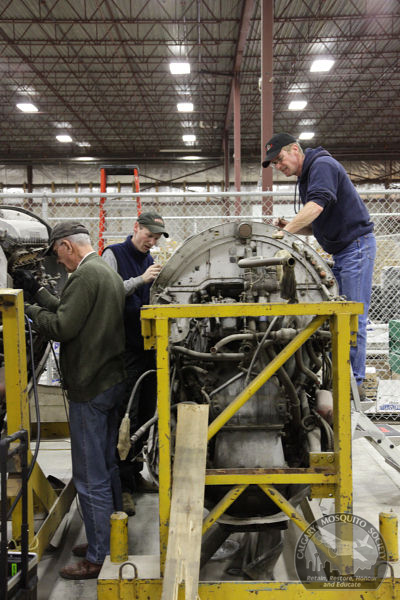
The Bomber Command Museum of Canada supplied three members of their restoration team to help inspect the engines. These men have already rebuilt three Merlins for their museum's Lancaster and are now working on the fourth. (Peter Cromer)

Its been more than 50 years since these Merlins were last overhauled, but thanks to a modern borescope inspection tool, CMS Restoration Lead, Jack McWilliams was able to peek deep inside the cylinders. (Peter Cromer)
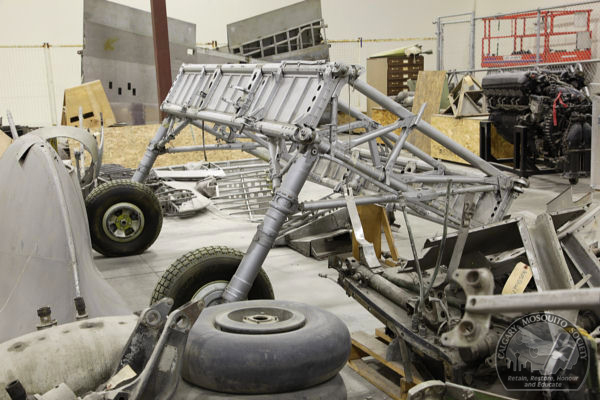
The Hurricane has gone through several attempts at restoration, both with the Air Museum of Canada and the Aero Space Museum of Calgary. Some of the sheet metal work that had begun was of a very good quality but unfortunately because of years of storage and neglect most of those pieces now suffer badly from 'hangar rash'. Here we see the wing centre section. During our 2011 inspection we noted one of the wing attach fittings was missing. It turned up this time, packed in a box. (Peter Cromer)
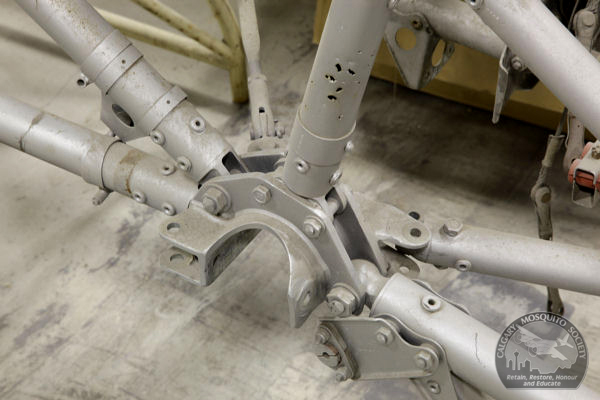
Here we see a close up of the Hurricane's complicated construction. While most other manufacturers were happy to simply weld their trusses together, Hawker used bolts, rivets and gussets. (Peter Cromer)
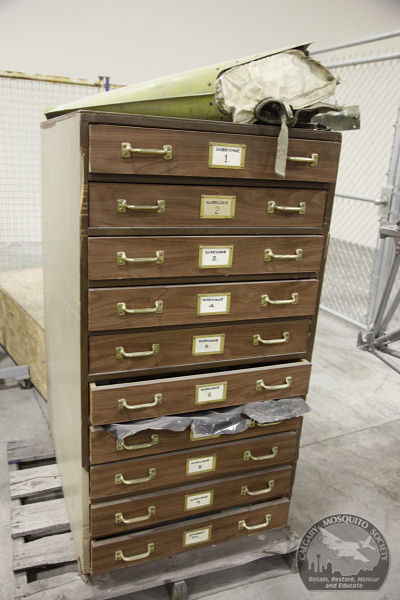
Inside this filing cabinet are all the wooden formers for the Hurricane, both the originals and a set made during one of the restoration attempts. After all these years, some anonymous worker's efforts will finally be used. (Peter Cromer)

We'll end off with a bizarre discovery - a can of "Pure, Wholesome, Magic Baking Powder". Is there a collector club for vintage baking ingredients? (Peter Cromer)